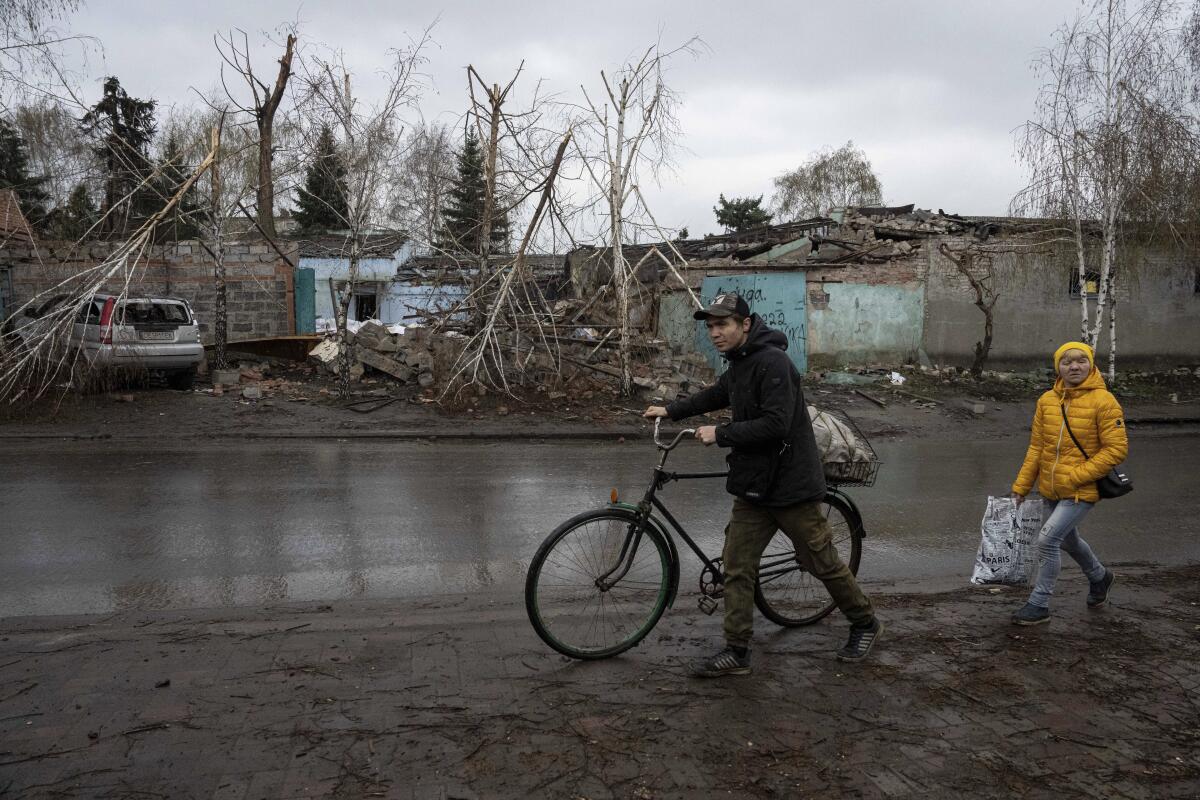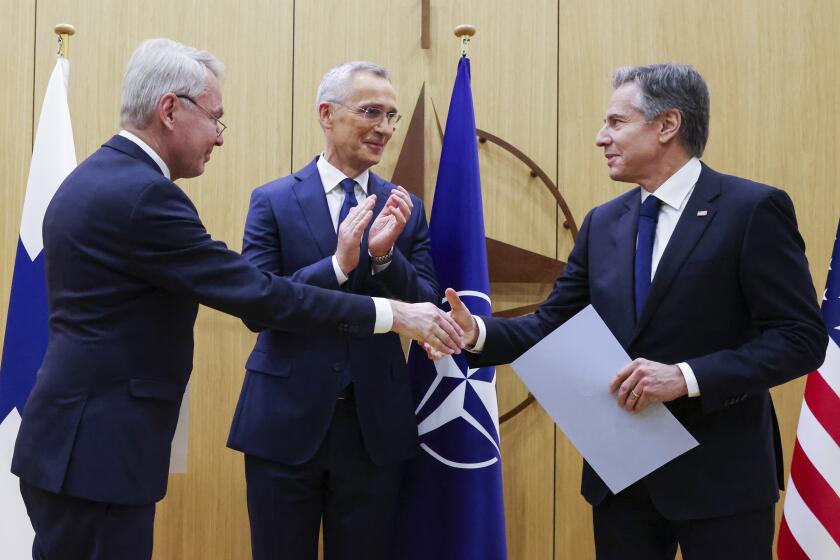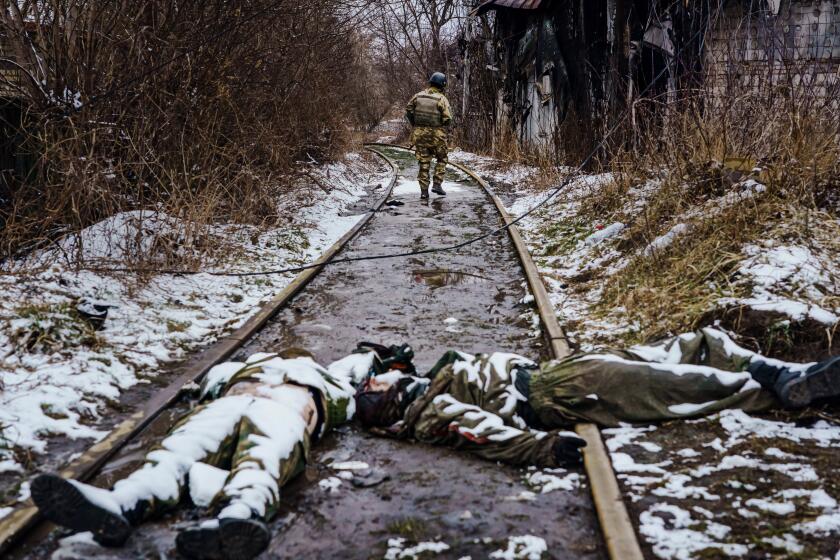U.S. investigating whether Ukraine war documents were leaked

- Share via
WASHINGTON — The Justice Department has launched an investigation into the possible release of Pentagon documents that were posted on several social media sites and appear to detail U.S. and NATO aid to Ukraine, but may have been altered or used as part of a misinformation campaign.
The documents, which were posted on sites such as Twitter, are labeled secret and resemble routine updates that the U.S. military’s Joint Chiefs of Staff would produce daily but not distribute publicly. They are dated from Feb. 23 to March 1, and provide what appear to be details on the progress of weapons and equipment going into Ukraine with more precise timelines and amounts than the U.S. generally provides publicly.
They are not war plans and they provide no details on any planned Ukraine offensive. And some inaccuracies — including estimates of Russian troop deaths that are significantly lower than numbers publicly stated by U.S. officials — have led some to question the documents’ authenticity.
Finland is now NATO alliance’s 31st nation, a major blow to Russia with a historic realignment of Europe spurred by Moscow’s invasion of Ukraine.
In a statement Friday, Sabrina Singh, a Pentagon spokeswoman, said the Defense Department “made a formal referral” of the matter to the Justice Department for investigation. And the Justice Department, in a separate statement Friday, said, “We have been in communication with the Department of Defense related to this matter and have begun an investigation.”
The investigation comes as questions continued to swirl about the origination and the validity of the documents, and as reports suggest more have begun to appear on social media sites.
“It is very important to remember that in recent decades, the Russian special services’ most successful operations have been taking place in Photoshop,” Andriy Yusov, a spokesman for Ukraine’s military intelligence directorate, said on Ukrainian TV. “From a preliminary analysis of these materials, we see false, distorted figures on losses on both sides, with part of the information collected from open sources.”
Separately, however, Ukrainian President Volodymyr Zelensky’s office released a statement Friday about a meeting he had with his senior military staff, and it noted that “the participants of the meeting focused on measures to prevent the leakage of information regarding the plans of the defense forces of Ukraine.”
If the published documents are authentic to any degree, however, the leak of classified data is troubling and raises questions about what other information about the Ukraine war — or any coming offensive — could be distributed. U.S. officials on Friday provided no clarity on the origin of the documents, their authenticity or who actually was the first to post them online.
The New York Times was the first to report about the documents. Later Friday, the newspaper reported that more documents involving Ukraine as well as other sensitive national security topics such as China and the Middle East had begun appearing on social media.
Los Angeles Times photographers document the battle in Ukraine after Russian forces invaded nearly a year ago.
One U.S. official said the documents resemble data produced daily by the Joint Chiefs, although some numbers are wrong. Even if they were legitimate, the official said, the U.S. believes there is little real intelligence value to the documents, since much of it is information Russia would already know or could glean from the battlefield. The official spoke on condition of anonymity to discuss intelligence documents.
The charts and graphs describe some battlefield status of both sides from a month ago, U.S. military movements during the previous 24 hours, personnel numbers and the local weather outlook.
But there are errors. Under a section titled “Total Assessed Losses,” one document lists 16,000 to 17,500 Russian casualties and up to 71,000 Ukrainian casualties. Gen. Mark Milley, chairman of the Joint Chiefs of Staff, said publicly last November that Russia has lost “well over” 100,000 soldiers, and Ukraine had lost about that many also. And those estimates have continued to climb in recent months, although officials have stopped providing more exact numbers.
More to Read
Sign up for Essential California
The most important California stories and recommendations in your inbox every morning.
You may occasionally receive promotional content from the Los Angeles Times.












